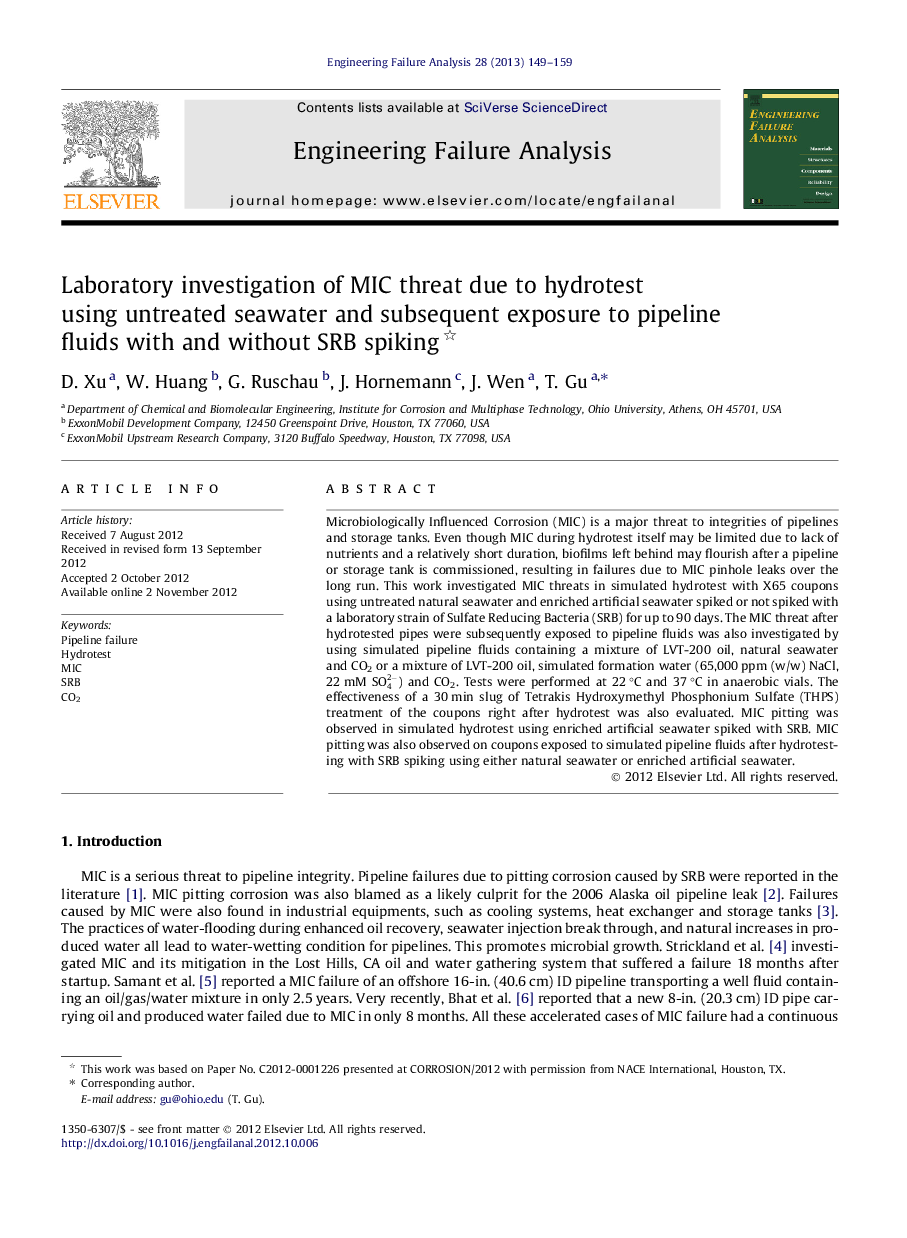| Article ID | Journal | Published Year | Pages | File Type |
|---|---|---|---|---|
| 768684 | Engineering Failure Analysis | 2013 | 11 Pages |
Microbiologically Influenced Corrosion (MIC) is a major threat to integrities of pipelines and storage tanks. Even though MIC during hydrotest itself may be limited due to lack of nutrients and a relatively short duration, biofilms left behind may flourish after a pipeline or storage tank is commissioned, resulting in failures due to MIC pinhole leaks over the long run. This work investigated MIC threats in simulated hydrotest with X65 coupons using untreated natural seawater and enriched artificial seawater spiked or not spiked with a laboratory strain of Sulfate Reducing Bacteria (SRB) for up to 90 days. The MIC threat after hydrotested pipes were subsequently exposed to pipeline fluids was also investigated by using simulated pipeline fluids containing a mixture of LVT-200 oil, natural seawater and CO2 or a mixture of LVT-200 oil, simulated formation water (65,000 ppm (w/w) NaCl, 22 mM SO42-) and CO2. Tests were performed at 22 °C and 37 °C in anaerobic vials. The effectiveness of a 30 min slug of Tetrakis Hydroxymethyl Phosphonium Sulfate (THPS) treatment of the coupons right after hydrotest was also evaluated. MIC pitting was observed in simulated hydrotest using enriched artificial seawater spiked with SRB. MIC pitting was also observed on coupons exposed to simulated pipeline fluids after hydrotesting with SRB spiking using either natural seawater or enriched artificial seawater.
► Clean Gulf of Mexico seawater causes no MIC in 90-day simulated hydrotest. ► MIC occurs in natural seawater and enriched artificial seawater spiked with SRB. ► MIC occurs on coupons exposed to a fluid mixture after simulated hydrotest. ► THPS biocide treatment of coupons after simulated hydrotest is evaluated.
